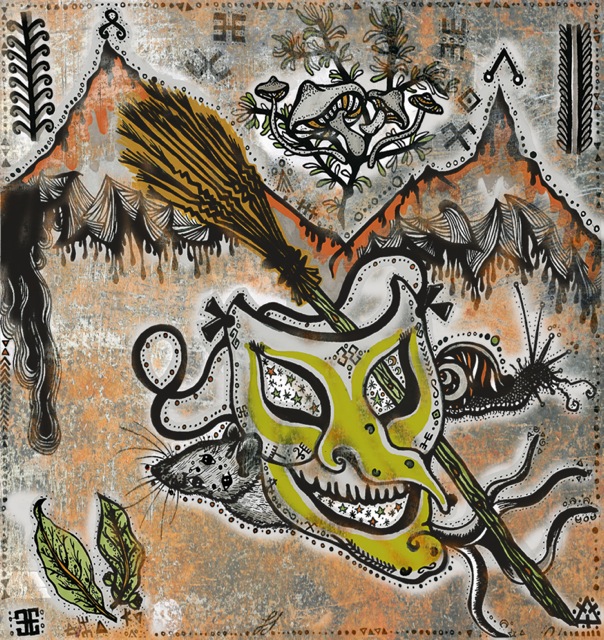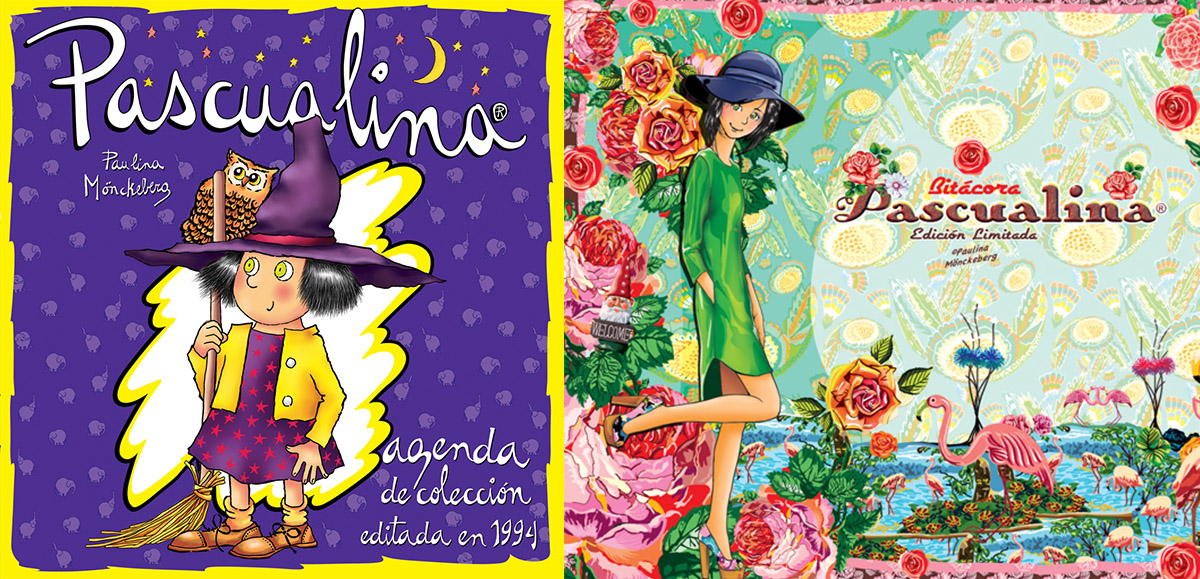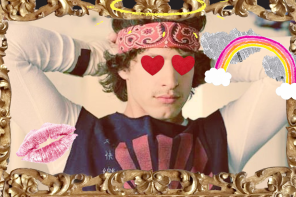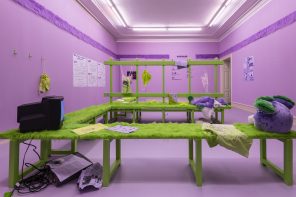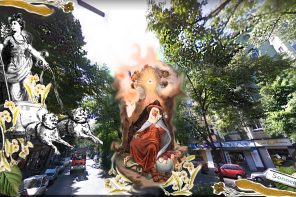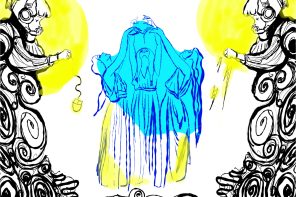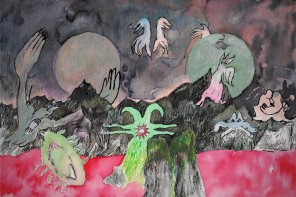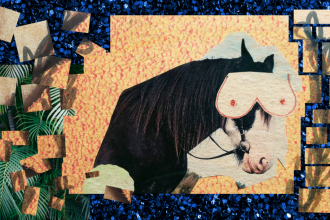As a child, my notion of witch was built mostly around a mix of books, cartoons, TV and films. It wasn’t a foul, scary image, but an exciting, fun, mischievous one. Being a witch was awesome. You had magic powers, could purposely spend endless time collecting random stuff for spells, had a flying broom as a means of transport and a cat as a sidekick. What more could you want?
Hence I felt truly lucky to have an imaginary witch friend as a kid. I created/met her soon after I received a child-sized broom as a present… Don’t listen to the gender-stereotype-construction hazard alert in your head: I never used it to sweep. What kind of boring game is sweeping, and what kid plays with a toy the way it is intended function anyway?
For me it was immediately a flying broom that, of course, belonged to an amazing witch: Escobilona was born.
The broom itself became decreasingly necessary when playing with/as Escobilona, because she would pop up at anytime: in the park, at the swimming pool or at the beach. Unfortunately, I don’t remember exactly what kind of adventures we had together/I experienced through embodying her character, but what remains is the impression that it was a blast; she was rebellious, funny and there were no limits to her powers.
Her demise was sad, though: one day, my mother told me that she had designated my little broom as the official broom for sweeping up the dog’s poop. I protested, of course, but since I hardly played with it – in her opinion – it was better to put it to some good use: droppings. Since I was never one to accept a parental resolution lightly, I must have fought enough to have my mother promise to get me another tiny broom the next time we passed through Chimbarongo, a town known for its wickerwork where we would sometimes buy baskets when travelling to the south.
The time passed, various trips to the south too, but we never stopped at Chimbarongo. Maybe due to the fact that I didn’t have the broom anymore or because I was growing up, Escobilona started to drift away. At one point, I decided to draw her, as to capture her fleeting persona on paper, but all attempts seemed futile; I just couldn’t get her down.
Her physical appearance wasn’t clear to me, so I picked from the imagery of witches I had been exposed to. Was she green? Was she ugly? Did she have an odd nose? Some warts here and there? I wasn’t sure if she was a child – though most of the times she seemed to be, but not always – so was she old then? She could also morph into different creatures or people, so which of them was her true self? On the very edge of ontological inquiry, I would pick up crayons and attempt to represent her. Sadly, my drawings fell into either poorly executed stereotypical images of witches, or normal girls with green complexion and black attire. She was none of them.
Reflecting now upon my childhood witch, I realise that I’m not alone. Talking to various women about their views of witches as kids, I see that most of them used to play witch rather than princess, despite the ever-increasing marketing efforts to push puffy princesses as the go-to-fantasy for young females.
Witches are appealing to girls, much more than princesses I would argue, because they have power, are independent and don’t need men to assert themselves. They can dare not to ascribe to the norms: from beauty standards to interests and fields of action. They, despite their supposed “deviances”, are the protagonists.
This enthusiasm for witchy characters has been picked up by mainstream media, advertisers and toy companies but, unsurprisingly, they have felt it necessary to give these witches a “modern twist”: many of them have been revamped in order to conform to current standards of female beauty and sexiness, or simply stripped of their witch condition*, leaving their power to rely mainly on their looks.
To this, I say: spare the witches of the air-brushing culture, let the witches be the complex, unorthodox, status quo anarchists they are, so they can remain appealing female characters for girls and inspire them, maybe, to create their own awesome and empowering characters such as my beloved Escobilona.
*Pascualina, originally a young witch (Chilean comic), suffered this visual transformation, plus she no longer behaves as a witch.
Words by Denise R.
Illustration by Lori Turner

